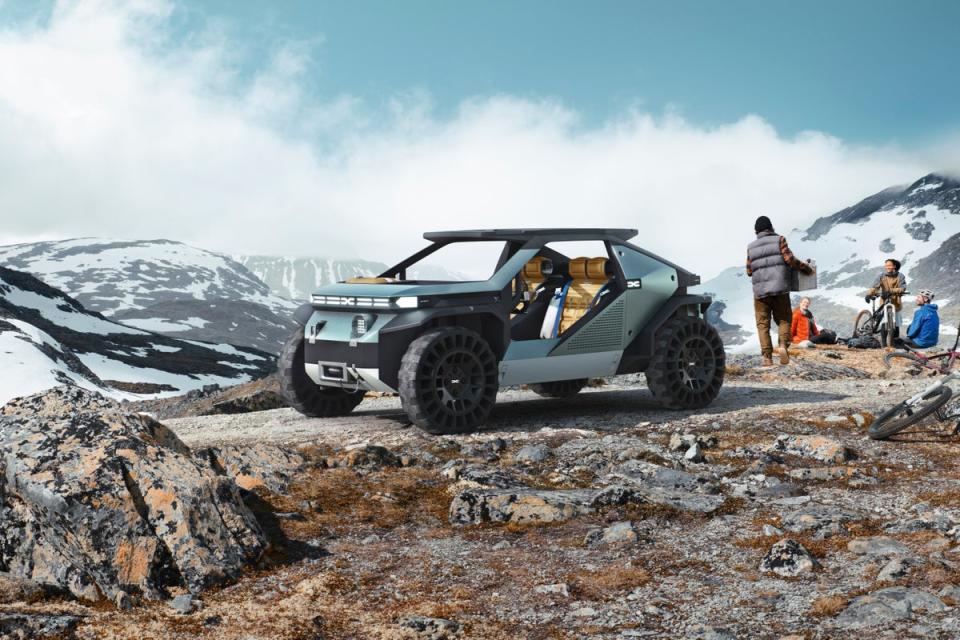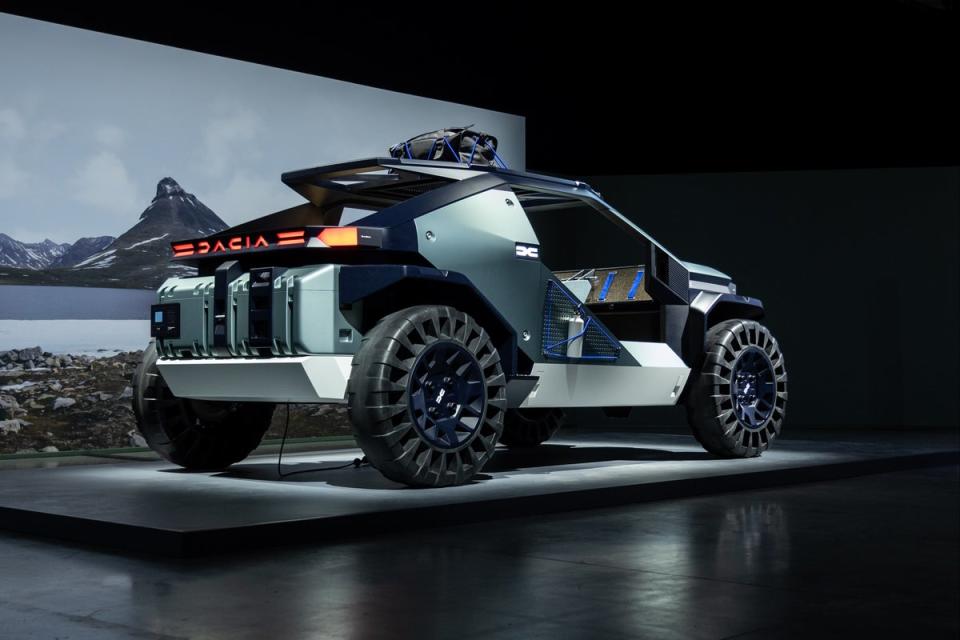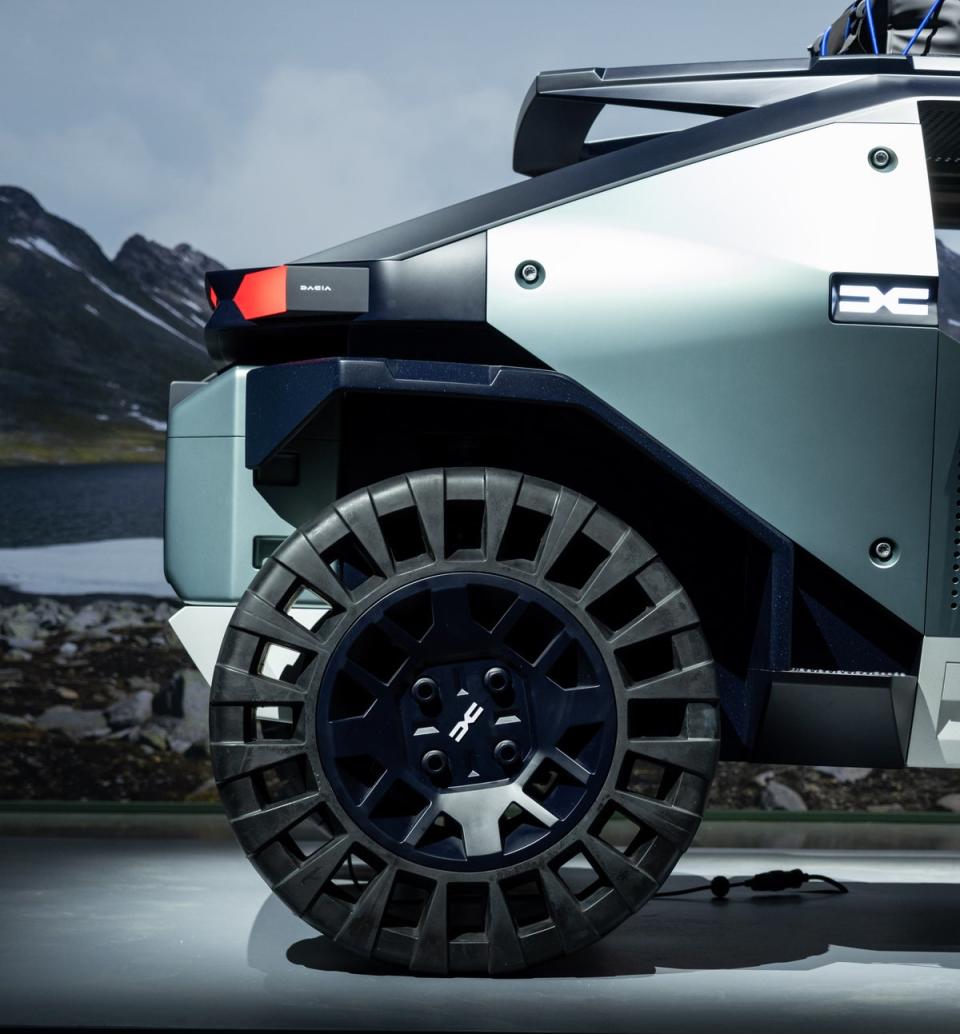Dacia flexes its eco muscles with Manifesto concept EV

Dacia has been talking to its customers about what they would like to see in future models, and it turns out that many of them are very outdoorsy types.
A lot expressed interest in taking their cars off road, and some even wanted a comfortable way to sleep in them from time to time. What has emerged in only a few months is an EV which at first glance is about as practical as a pair of chocolate galoshes – there’s no windscreen or windows for starters. Or doors.
But in other ways the Dacia Manifesto, which the brand has just unveiled to European journalists in Paris, is packed with interesting and innovative ideas and technology, some of which will no doubt find their way into future Dacia models, even if the Manifesto itself should be seen as a rolling lab, and will never hit the road.
Lightweight
It certainly looks like a lightweight but ruffty tuffty all-terrain vehicle so lacking in creature comforts that it makes, say, a Paris-Dacca racer look a bit effeminate. Some of the ideas have been seen before – a detachable single LED headlamp which campers can use as a torch, for example.
But car seat covers which convert into sleeping bags is a new one on me. It seems so obvious as soon as someone else thinks of it.
There is heavy use of recycled materials – the dashboard doubles as a noticeboard and is made of cork and recycled rubber. Parts of the car are made from recycled tyres, and the tyres it uses are solid and puncture-proof. The rear panel folds down to double as a table or work bench.
There is no need for complicated sat-navs if you simply clip In your smartphone - as apparently 85 per cent of Dacia owners have one.

Sleep
For the owners who want to be able to sleep in their cars, Dacia has come up with a 50-kilo box which fits in the boot of their seven-seater Jogger. As well as storage, the box contains a wooden frame assembly which clicks together to form a bed frame above the seats.
Stored above the box, but below the parcel shelf, are a series of specially shaped cushions which cover the bed frame, and – hey presto - you have a double bed. Mind you, having checked the depth of the cushions I wouldn’t fancy sleeping on it for too many nights.
Dacia is staying tight-lipped about price at this stage but says the system should be available some time next year.
It takes two people to lift the box, but one person can deploy it, although it does mean a fair bit of running around.
When Dacia started mainstream operations in Europe 18 years ago it set out to be an affordable brand. Its original Sandero was a reskinned version of the previous generation Renault Clio without any of the frills. It had everything which was essential and nothing that wasn’t. At a smidge under £6,000 it was just about the cheapest new car you could buy, and in its most basic spec it sold well in Europe – particularly France.

Essential
But British buyers had a different idea of what was essential. They wanted air-con and alloy wheels and all the bells and whistles the competition offered at a higher price, so they specced their cars to the hilt.
Dacia has taken this on board and reassessed what essential means. These days their cars should not be regarded as bargain-basement cheapies but as well-equipped and clever models – and if that means using your mobile phone as a sat-nav instead of adding expensive integrated screens, so be it.
Another way of being what Dacia terms Eco-Smart is to keep things light. They are ditching the use of leather and ornamental chrome, and even reducing the amount of paper used it their cars. As a result the Jogger is considerably lighter than its seven-seater competition.
Logo
Even the company’s new logo, a conjoined D and C, is finished in white instead of chrome, and it looks a lot better than the previous rather nondescript shield logo.
As Dacia CEO Denis Le Vot told journalists: “Rising prices are turning cars into a luxury. Not all customers want a car that is faster, more technical and more expensive.”
The company certainly seems to be doing something right. For the past four years it has sold more SUVs in Europe than any other brand.

 Yahoo Sport
Yahoo Sport 





































